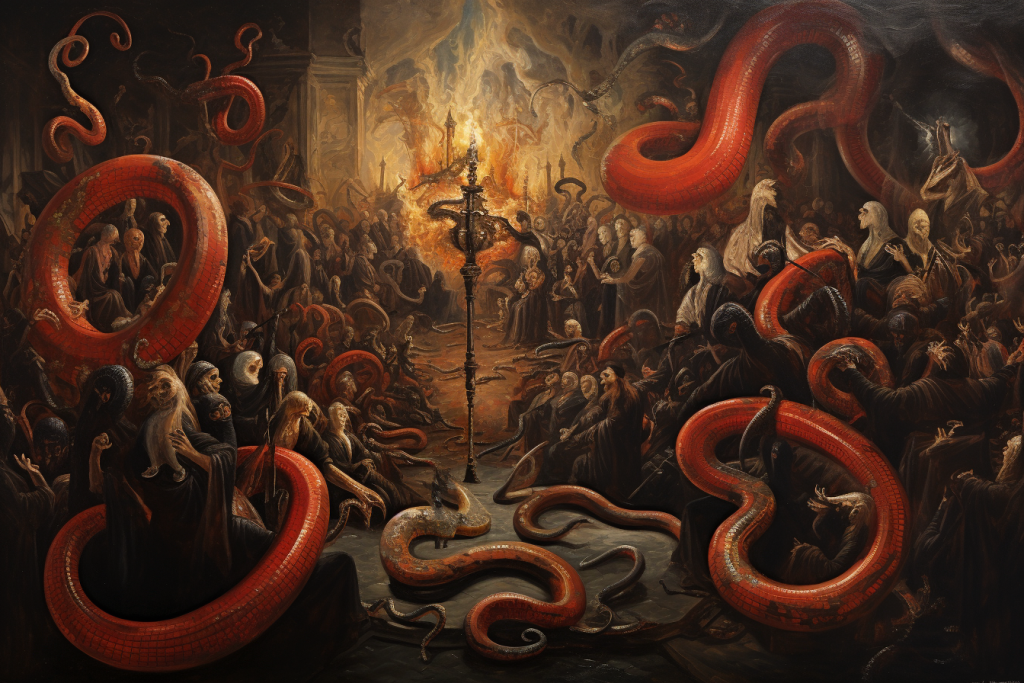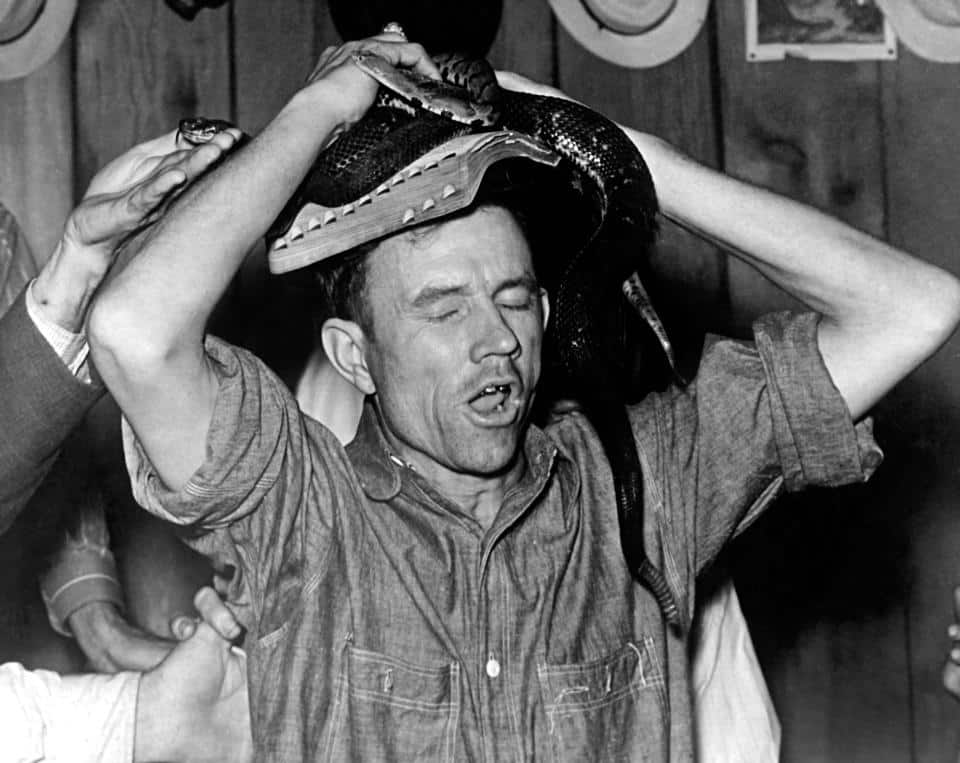There’s no way I can enter into the same dialogue on some of the Spirit Trail songs as I did on my review of Scenes from the Southside. Spirit Trail offers several new concepts which I’m not so sure about. Preacher in the Ring is one example. We do have some tall tales to tell here in Wales, but nothing so far that concerns snake-handling congregations (mind you – what a good idea to start filling up some of our dwindling chapels!)
I have read on one review that it might be something to do with one congregation up in the Appalachian Mountains who took one verse in the New Testament a little too literally, and formed a sect of their own. I also note the influence of Lee Smith is acknowledged on the album cover (and on The Road Not Taken).
Carwyn Tywyn
2023 note:
Snake-handling religions were popularly reported in 2019 after photos were discovered showing the practice in the 1940s (see below). it was started by Pastor George Hensley at his church in Chattanooga, Tennessee. Hensley said he was commanded by Mark 16:18 which says: “They shall take up serpents; and if they drink any deadly thing, it shall not hurt them; they shall lay hands on the sick, and they shall recover.”
Hensley died of a snakebite in 1955.
Download:
 Preacher in the Ring part 1
Preacher in the Ring part 1
» 4.8 MiB - 1,273 downloads
New York, NY
September 26 2009


